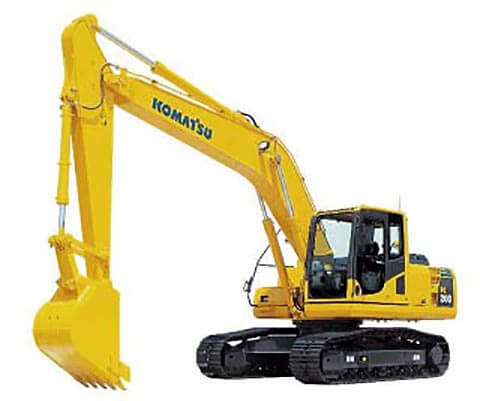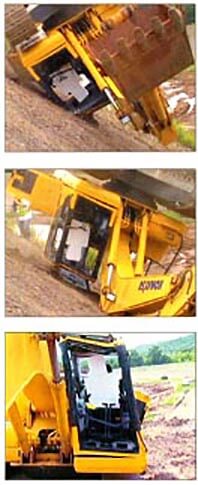2000
The IT revolution had a tremendous influence on the technology of construction equipment as well. The satellite operation management system was developed during the 90's as a method to supervise and manage equipment from a remote distance, and became an industry standard during this era.


This model was equipped with the newest engine technology "ecot3". As a 20 ton class model this was the first shovel that met the 3rd emission regulation standard of the US and Europe (Construction machinery that met the 3rd regulation for gas emission set by the Ministry of Land, Infrastructure, and Transport). Komatsu also incorporated total control of the engine and hydraulic devices, developed and produced within the company, with the electric system, which delivered up to 10% less fuel consumption compared to PC200-7.
For a mass-produced hydraulic shovel, this model was the first to be equipped with Roll Over Protective Structures to guard the operator along with the retracting seat belt if the machine ever fell as well as protection from falling objects. The rigid, noise absorbing cab offered a comfortable and safe space that was as quiet as inside a regular car, helping reduce the operator's stress. The supporting menu was also further developed with upgraded "KOMTRAX" supplying an "energy saving operation report" based on the collected data. A large 7-inch multi color LC monitor installed inside the cab improved both visual recognition and operation ability. From starting the engine to the end of operation, it assisted an operator at every opportunity.
Weight: 19500kg, Bucket capacity: 0.8m3
Hydraulic excavator
Since its first emergence in 1951, it took only 50 years for the hydraulic shovel to establish its primary position on construction sites worldwide. Its size ranges from mini to super size depending on the scale of construction, and during the half century, it kept evolving by achieving a minimum rear-swing radius and adapting styles that would work with characteristics of each site. Mirroring the movement of a human hand, a hydraulic shovel will continue to evolve during the 21st century.